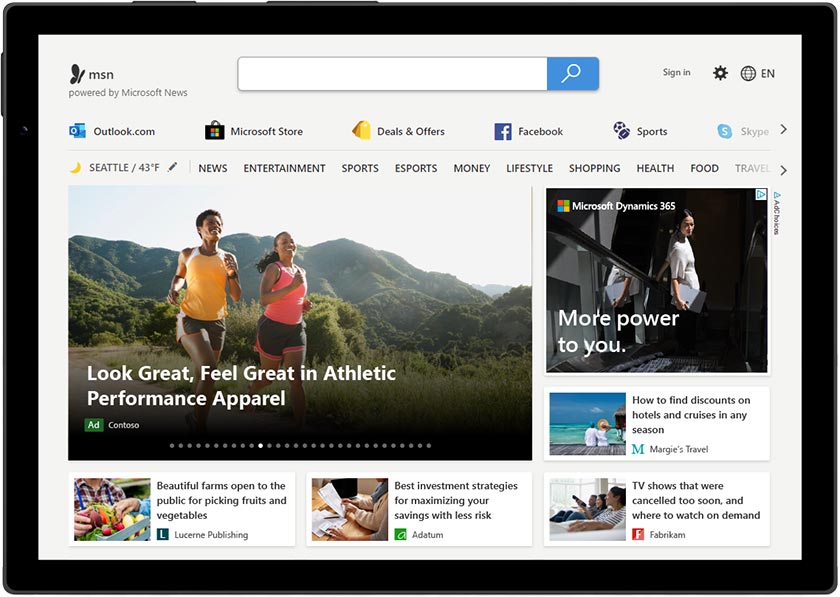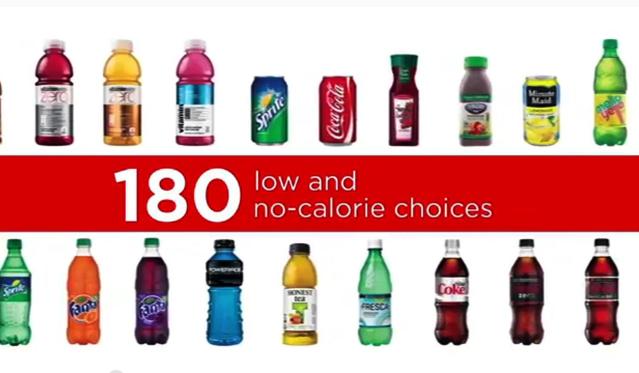
In recent years, targeted TV advertising has become more popular. Targeted advertising not only helps increase the reach of a marketing campaign, but can also help build brands. However, targeted advertising wasn't always a viable option before it became mainstream. A targeted commercial could look like a 30-second spot, but it was usually scheduled weeks in advance. A majority of commercials are simply mass-market messaging.
One of the key benefits of targeting TV ads is that consumers are able to tailor their viewing experience. For example, they can select which ads they want to see during the commercial breaks. This is much more effective than seeing one generic ad over and over. However, there are still some challenges when it comes to reaching the right audience with the right message.
Advertisers must first find a way for TV advertising to be more consistent. That means combining data and technology to deliver precision targeting. There are many kinds of targeting. These include connected TV (CTV), addressable television, and AT. The most popular form of targeted advertising is CTV. Connected television is a programmatic platform that allows marketers target viewers based upon their demographics, behavior, and other characteristics.

New viewing methods can offer companies many new benefits. Marketers can enhance their branding strategies by using streaming services like Netflix and Hulu. They can also create awareness of a product line that's only available online. These types of viewing experiences are able to transform the way we see TV ads.
QR codes are another option available to marketers. These handy little gadgets allow you to browse a product, purchase a product and explore the company's history. While QR codes have existed for some time, they have become increasingly popular in recent years.
Cadent's Aperture platform is one example. It allows advertisers to build audience segments using first and third-party data. Although not the most innovative feature, it is still vital for marketers.
Infomercials is another type of targeted television that can be very attractive. These ads typically offer a premium or discount on a cross-sell or upsell product. An infomercial should be well-written and convey the product with authenticity. An appealing, humorous commercial is also a great way for viewers to be attracted.

Advertisers must think about both their brand, and their target audience in order to create believable TV ads. A well-executed informational should also be capable of creating a need in viewers' minds. If the viewer can clearly identify the need for the product it will be much easier for them to form a friendship.
Using data to make better decisions about the right TV ad is the next step. Advertisers can use technology and data today to optimize their media campaigns to achieve their business goals.
It is evident that TV advertising has become interactive. More consumers are using streaming services and other online content. Marketers must think creatively about engaging their audience with over-the-top content as more people cut the cord.
FAQ
Why not use social media advertising for your business?
Social Media Marketing allows you to reach customers right where they are, via social networks like Facebook, Twitter, LinkedIn and YouTube. You can also target specific segments within these networks with keywords.
Because this advertising method costs less online than traditional methods, it's more cost-effective. You can also build strong relationships and trust with your clients, both current and prospective.
It is simple to get started using social media for your business promotion. All you need is access to the Internet and a smartphone.
What do you need to know about television advertising?
Television advertising has the potential to reach large audiences at once. It was also very costly. But if you use it correctly, it can be extremely powerful.
Although there are many types, TV ads share certain common characteristics. You must ensure your TV ad fits within the category it is being placed. Don't confuse a lifestyle ad with a product advertisement if you are running a commercial. Your message should remain consistent throughout the campaign.
Second, prime-time hours are the best times to air your ads. This is because many viewers are able to relax in front of the TV while watching. You want them to be relaxed enough to focus on your words.
Don't assume that just because you have lots of money, you will achieve great results. In fact, the opposite may be true. A University of California study found that commercials broadcast during popular shows had a lower chance of selling products than those broadcast during less-popular shows. You should ensure that you spend your money wisely if you plan to advertise on television.
What is the primary purpose of advertising?
Advertising is more about connecting with customers than just selling products.
Advertising is about communicating values and ideas to people who are interested in your products or services. Advertising is about changing minds and attitudes. It's all about building relationships.
It's all a matter of making people feel good.
You can't sell to your customers if you don’t know their needs.
Prior to you begin any advertising project, make sure you understand your customer's buying habits and needs.
You can then design ads that resonate with them.
What do you need information about print advertising
Print advertising is an effective way to reach consumers. Print advertising is used extensively by companies to promote their products or services. The key objective is to capture the attention of the consumer.
Print ads are typically one page long and include text, images, logos and other graphics. They can also include sound and animation as well video and hyperlinks.
The following categories are the most common types of print advertisements:
1. Brochures: These large-format printed pieces are meant to draw customers into stores. They are often filled with colorful images and catchy designs.
2. Catalogues – These are smaller versions to brochures. They are sent to customers who have requested specific information.
3. Flyers - These small pieces of paper are distributed at events like fairs and concerts. Flyers can be handed out at retail outlets for a small fee, but are generally free.
4. Posters - These flyers can be larger than the ones you see on the flyer. They are often displayed on walls, fences, or buildings. They are usually made using computer software programs, which is designed to draw the eye of passersby.
5. Direct mail: These are postcards or letters that are sent directly by post to potential customers. These are sent periodically by companies to remind current customers about their business.
6. Newspaper Ads - These are placed in newspapers and magazines. They are usually quite long and contain both text and images.
What do you need to know about radio advertising?
Understanding the interactions between different media is essential. It is important to understand that all media forms are complementary and not competitive.
Radio is best used to complement television advertising. Radio complements television advertising by reinforcing key messages or providing additional information.
Radio listeners often find TV commercials too lengthy. Radio ads are usually shorter and less expensive.
Is there a way for me to get free traffic?
Free Traffic refers to the traffic that comes directly from organic search results without paying for ads. This type is known as natural, or organic traffic. There are many ways you can get free traffic.
Article Marketing is an excellent way to generate free traffic. The CPC is usually very cheap compared to paid ads. Article marketing can also be referred to content marketing.
Social Media Marketing: Social media sites such as Facebook, Twitter, LinkedIn, and LinkedIn make it easy to promote your company through advertising. You can use these platforms to post updates, share photos and build relationships with people who may become potential customers. Many businesses choose to pay for ad space on social media websites because they want to reach a wider audience at a lower price.
Blogging – Blogging is another way to get free traffic. You'll attract visitors if you write quality content that people enjoy reading. You can start to monetize your blog with the sale of products or services after you have attracted readers.
Email Marketing – Email marketing has been around ever since the dawn of the Internet. However, it remains one of your best methods to drive traffic to you website. Regular email marketing is a great strategy to increase your subscribers and ultimately sell something.
What is branding?
Branding is how you convey who you really are and what you believe in. It's how people remember you and your name.
Branding is all about creating an identity that makes your company memorable. A brand isn't just a logo. It also includes everything you do, including your physical appearance as well as the tone of voice that employees use.
A strong brand helps customers feel confident in buying from you because they know exactly what they're getting. And it gives them confidence in choosing your products over those of competitors.
Apple is an example of a well-branded business. Apple's brand is recognized worldwide for its clean design, high product quality, and great customer support.
Apple's name is synonymous with technology. People think of Apple whenever they see a computer or smartphone.
It is a good idea to create a brand prior to starting a new company. This will give your company a face and personality.
Statistics
- It collects money from the advertisers, keeps 32% for its role in facilitating the process, and the remaining 68% goes to the publisher (you). (quicksprout.com)
- In 1919 it was 2.5 percent of gross domestic product (GDP) in the US, and it averaged 2.2 percent of GDP between then and at least 2007, though it may have declined dramatically since the Great Recession. (en.wikipedia.org)
- Advertising spending as a share of GDP was about 2.9 percent. (en.wikipedia.org)
- Worldwide spending on advertising in 2015 amounted to an estimated US$529.43 billion. (en.wikipedia.org)
External Links
How To
How can you advertise on a billboard
While billboards have existed since the late 1800s they became more popular after World War II, when they were installed along roadsides and highways. Many billboards include text advertising and others may also display photographs or artwork. While most billboards are static, others display messages that change regularly, such as weather forecasts, sports scores, stock prices, and political events.
Most billboards are outdoor displays, although there are indoor versions, too. Most outdoor billboards are seen by traffic at least once per day. Indoor ones are only visible once or twice a year. The most common type of outdoor billboard is called a "cubic" billboard because it is composed of three layers -- two sheets of glass sandwiching a layer of fiberglass mesh. This design allows air circulation through the billboard. It keeps it cool during hot weather and warm during cold.
Billboard Advertising Inc. has many of North America's most prominent billboard advertising firms. Advertisers pay them to advertise on their billboards. These companies then sell space on their billboards to advertisers. These spaces are sold to advertisers depending on the amount they plan to spend on advertising. Many advertisers choose the best spots for their ads by looking at where people are most likely to drive or walk.
Billboard Advertising Inc. sells advertising space. It also has agreements with local governments to place signs on public property. Some cities allow billboards in any area, while others have restrictions. Chicago, for example requires that billboards are no higher than 1,000 feet from any highway. Other cities also require billboards to be no closer than 500 ft away from schools and churches.
Billboard Advertising Inc. is a contract holder for the promotion of products and services throughout the United States. These include Florida, California Nevada, Texas Arizona New Mexico Colorado Washington Oregon Idaho Utah Wyoming Alaska Hawaii Canada Puerto Rico Guam Virgin Islands and American Samoa.